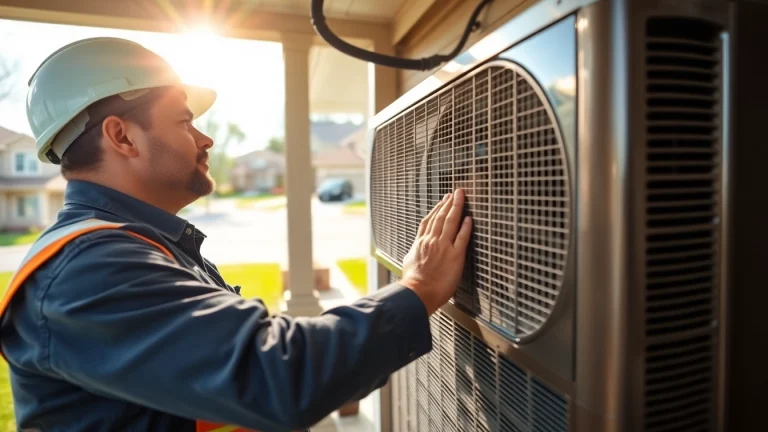
Elevate Your Space: The Benefits of an Automatic Bioethanol Fireplace
Understanding Automatic Bioethanol Fireplaces
What is an Automatic Bioethanol Fireplace?
At the intersection of modern technology and timeless beauty, the automatic bioethanol fireplace represents a revolution in home heating and aesthetics. These fireplaces use bioethanol, a renewable energy source derived from plants, to create a clean, efficient, and environmentally friendly combustion process. Unlike traditional wood or gas fireplaces, automatic bioethanol fireplaces offer a high degree of convenience, including features such as remote control operation, safety sensors, and programmable settings that cater to a modern lifestyle.
How They Work: The Technology Behind It
The heart of an automatic bioethanol fireplace is the burner system, which consists of a fuel tank, ignition system, and a control mechanism. The bioethanol fuel is stored in a tank, which is suitable for safe use indoors or outdoors. When you initiate the operation, a microprocessor-controlled ignition system activates the burner, converting the bioethanol into an attractive flame.
Many units are equipped with smart technology that allows for control via smartphone apps or voice commands through devices like Alexa or Google Home. This enabling of modern technology ensures that users can warm their spaces or create a cozy atmosphere with ease, either from a distance or directly from their smartphones.
Benefits Over Traditional Fireplaces
Automatic bioethanol fireplaces have several key benefits over their traditional counterparts:
- Environmentally Friendly: Bioethanol is a renewable resource that burns cleanly. It produces fewer emissions compared to wood or gas combustion, making it a more sustainable choice for eco-conscious consumers.
- No Chimney Required: Since the combustion process is clean, these fireplaces do not require a chimney or flue, allowing for greater flexibility in installation across different spaces.
- Easy to Use: With remote and smartphone controls, users can easily ignite and adjust the flame without the hassle of traditional fireplace setups like log placement or kindling.
- Ambiance and Aesthetics: The flames produced are visually pleasing and can create a significant aesthetic appeal, enhancing the ambiance of any room.
Choosing the Right Model for Your Home
Factors to Consider: Size, Capacity, and Design
Choosing the right automatic bioethanol fireplace for your space requires careful consideration of several factors. The size of the fireplace is crucial, as it should complement the scale of the room while providing sufficient warmth and atmosphere. Products come in various capacities, meaning the volume of fuel they can hold will affect the duration of use before refueling is necessary.
Design is equally important. Modern models offer a variety of styles—ranging from sleek insert designs to more traditional standalone options. Consider the overall décor of your home and how the fireplace will integrate into your existing environment.
Top Brands and Their Offerings
When selecting an automatic bioethanol fireplace, reliability and performance are essential. Some of the top brands in this space include:
- Afire: Known for its innovative designs that offer remote-controlled operation and exceptional safety features.
- Planika: A leader in automation technology with models featuring integrated safety systems and aesthetic versatility.
- Ignis: Offers a range of models designed for both indoor and outdoor use, incorporating high-quality materials and advanced burn technology.
Comparing Manual vs. Automatic Options
While traditional manual bioethanol fireplaces require the user to ignite the flame and maintain it manually, automatic models streamline this process significantly. Considerations between these options include:
- Convenience: Automatic models allow for easier operation with the push of a button, ideal for households where users seek a hassle-free experience.
- Control Features: Advanced models include settings for flame height adjustment, timers, and safety shut-offs that are not typically found in manual designs.
- Installation Requirements: Both types can be installed without a flue, but the technological aspects of automatic models may require more substantial electrical work.
Installation and Maintenance Essentials
Installation Steps for Your Automatic Bioethanol Fireplace
When installing an automatic bioethanol fireplace, it’s essential to follow specific steps to ensure a safe and effective setup:
- Preparation: Choose a location that’s away from flammable materials and involves proper ventilation.
- Surface Installation: If using a standalone model, ensure the surface can support the weight and allow clearance for heat.
- Connect Power Supply: If the model features electronic controls, ensure a nearby power outlet for easier access to control systems.
- Test for Safety: Ensure all safety features, such as shut-off valves and ignition systems, are functioning correctly before using the fireplace.
Routine Maintenance Tips for Longevity
Proper maintenance of your bioethanol fireplace ensures it operates efficiently and maintains its aesthetic appeal over time. Here are some essential maintenance tips:
- Clean the Burner: Regularly inspect and clean the burner to prevent soot accumulation, which can affect performance.
- Check Components: Examine safety sensors and electrical components for any signs of wear or damage.
- Top Up Fuel: Ensure the bioethanol fuel is refilled as necessary, without overfilling the reservoir, to maintain an optimal burn.
Safety Precautions to Keep in Mind
When using any fireplace, safety should be paramount. Here are some critical safety precautions for bioethanol fireplaces:
- Keep Flammable Objects Away: Maintain a safe distance between your fireplace and any flammable materials.
- Ventilation: Ensure that the space is adequately ventilated to avoid the buildup of any harmful gases.
- Supervise Children and Pets: Always monitor pets and children around the fireplace to avoid accidental contact with the flames or hot surfaces.
Cost Analysis: Are They Worth the Investment?
Initial Purchase Considerations
Automatic bioethanol fireplaces come at various price points depending on their brand, manufacturing quality, and features. Typically, prices can range anywhere from a few hundred to several thousand dollars. When budgeting for an automatic bioethanol fireplace, consider any additional costs associated with installation or necessary accessories, like fuel storage or protective screens.
Operating Costs: Fuel and Efficiency
The ongoing costs of operating a bioethanol fireplace are influenced by the price of bioethanol fuel, which can vary depending on location and supplier. On average, users can expect to spend between $1 to $3 per hour of operation, based on the size of the fire and model efficiency. For those who use the fireplace for only occasional heating or ambiance, these costs may be quite reasonable, especially when considering the advantages of a clean, efficient burn.
Value Additions: Home Resale Impact
Investing in home improvements typically translates into valuable increases in resale value. Automatic bioethanol fireplaces are particularly attractive for home buyers looking for modern amenities and environmentally friendly features. A well-installed, stylish automatic bioethanol fireplace can enhance the property’s desirability, making it a worthwhile investment.
Innovative Trends in Ethanol Fireplaces
Smart Technology Integration
As technology continues to evolve, so does the functionality of ethanol fireplaces. Many of today’s models integrate smart technology, allowing users to control their fireplaces through mobile apps or voice commands. This trend not only adds convenience but also increases the overall fire’s efficiency by allowing for precise adjustments to flame size and operation timing.
Design Trends to Watch
In the realm of design, modern automatic bioethanol fireplaces are embracing chic and minimalist styles that cater to contemporary interior aesthetics. Expect to see more linear and wall-mounted designs that create a streamlined look in any room. Many manufacturers also incorporate high-quality materials, such as glass and stainless steel, to enhance visual interest while maintaining functionality.
Environmental Benefits and Sustainability
One of the primary driving forces behind the adoption of automatic bioethanol fireplaces is their environmental benefits. As more consumers seek sustainable options, bioethanol’s renewable nature and clean burn become essential selling points. Additionally, manufacturers are employing methods to improve fuel efficiency, further reducing the carbon footprint associated with heating your space.


